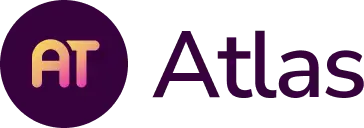Unlocking Curriculum Reform: How Atlas Helps Schools Meet the Challenges Identified by RAND
A major RAND Corporation study published July 15, 2025 highlights a core challenge in U.S. education: teachers struggle to access and implement high-quality, standards-aligned instructional materials, especially those tailored to their students’ needs. At the same time, districts often lack coherent systems to support curriculum planning and collaboration.
This disconnect between what teachers need and what systems support is exactly what Atlas was designed to solve.
Below, we explore key insights from the RAND report and how Atlas supports districts in meeting these challenges head-on.
Challenge 1: Fragmented Access to Standards-Aligned Materials
RAND found that only one-fifth of teachers are "by-the-book" users who rely on a single curriculum resource. Instead, 45% of teachers are "cobblers" who mix and match from multiple materials, and 25% are "DIY" users who primarily rely on their own created materials (RAND, p. 30).
How Atlas Helps:
Atlas centralizes curriculum planning at the unit and lesson level and connects each element—learning goals, assessments, and activities, directly to academic standards. Teachers can:
- Align each unit and lesson to over 800 up-to-date state or national standards
- Analyze where standards are addressed or underrepresented using robust reporting tools.
- Get full visibility of what students are learning across different subjects and grades to ensure vertical and horizontal curriculum alignment.
Teachers need guidance on what materials to use and how to use them. Atlas gives schools a framework to do both clearly and consistently.
Challenge 2: Limited Support for Collaborative Planning
The RAND report emphasizes that most teachers use multiple materials, making collaboration more difficult: "it is more difficult to support [mixed use] through professional learning and other resources that are often curriculum-specific" (RAND, p. 20).
How Atlas Helps:
Atlas is built for collaboration. Features that encourage school- and district-wide planning include:
- Shared unit and lesson templates so teachers can co-develop and revise plans.
- Commenting and reflection tools for peer and supervisor feedback.
- Vertical and horizontal scope and sequence views that reveal how curriculum builds across grade levels and subjects.
With Atlas, a Grade 5 teacher can see what their students learned in Grade 4, and what’s coming in Grade 6 in order to adjust and plan their curriculum to meet the needs of their students.
CALL OUT [Lightbulb or FL Logo] Our professional learning team works with schools to build sessions that guide teachers on developing their curriculum based on the goals and resources available at the school level.
Challenge 3: Adapting to Diverse Student Needs
Teachers serving high proportions of students with IEPs or multilingual learners are significantly more likely to use a high number of materials and modify them frequently (RAND, pp. 27, 29).
How Atlas Helps:
Atlas promotes both consistency and flexibility:
- Teachers can personalize lessons while maintaining alignment to shared unit goals.
- AI tools within Atlas help generate curriculum ideas, lesson ideas, and scaffolding strategies—based on chosen standards and student needs.
- Atlas stores a historical record of resources and curriculum, allowing teachers to easily adapt past materials to meet the diverse needs of their students.
Flexibility without chaos, that’s the balance Atlas strikes for instructional coherence.
Challenge 4: Data-Informed Instruction Is Still Rare
RAND found that even with more curriculum tools available, schools lack the systems to evaluate instructional coherence or the effectiveness of curriculum implementation (RAND, p. 41).
How Atlas Helps:
Atlas makes curriculum data visible and actionable:
- Run reports on standards coverage, gaps, redundancies, and interdisciplinary connections.
- Use assessment analysis tools to review how and where different methods are used.
- Search where a specific concept is taught and how often across grades and subjects.
- View comparative unit calendars to track pacing and sequence across classrooms
These insights don’t just live in spreadsheets, they live in planning workflows where decisions are made.
CALL OUT [Lightbulb or FL Logo] Through protocol based facilitation, have our professional learning team support using the Atlas reports to guide curriculum decisions and updates.
Challenge 5: Implementation Lags Behind Vision
RAND makes clear that having good curriculum materials is only one part of the equation. Without strong supports, coherence, and training, effective use falters:
"The work of building coherence can be challenging because it involves reconciling different visions, investments, and timelines." — RAND, p. 41
How Atlas Helps:
Atlas provides onboarding, training, and long-term support:
- A three-phase implementation plan with virtual trainings and support
- Dedicated teams to guide change management with a district’s curriculum process
- Asynchronous learning resources and customizable templates
Curriculum reform is a journey. Atlas walks alongside schools every step of the way.
Conclusion
The RAND report paints a clear picture: without tools that bridge planning and practice, curriculum reform efforts will fall short. Atlas was built with this exact problem in mind.
By aligning curriculum to standards, enabling collaborative planning, supporting flexible instruction, and unlocking actionable data, Atlas helps schools turn policy into practice—and vision into reality.

